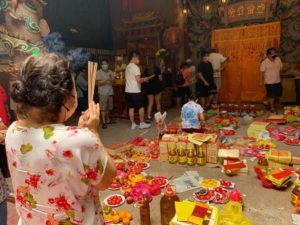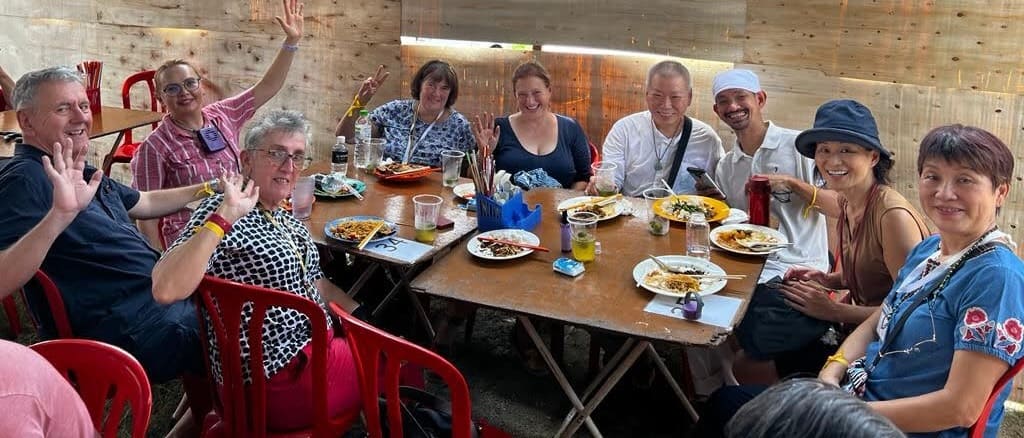1st October, 2022
The tour started at the back of a kopitiam, where our group of 10 MCG members sat expectantly at a round table. We were across the street from the bustling temple complex at Kau Ong Yah (also known as Nine Emperor Gods) temple in Ampang. Our guide, photographer Sean Liew, gave us a very detailed explanation about the origins and folklore of the festival. The Nine Emperor Gods festival is celebrated by Chinese communities only in South East Asia – specifically, Malaysia, Thailand and Indonesia.



On the first nine days of the ninth lunar month of the Taoist calendar, devotees believe that the Nine Emperor gods visit earth. While they are here, the gods take residence in nine kerosene lamps that are lit and raised up on a very tall bamboo pole at the edge of the temple grounds. When the nine gods are not visiting earth, they reside in the seven stars of the Big Dipper, plus two lesser stars nearby. The festival is about balancing the cosmic forces of yin and yang. Devotees also pray for long life, good health, and to settle disputes. In Sean’s words, the festival is “all about praying for our own good, praying for the good of the country, praying for the good of the community”. People worshipping at the temple are expected to practice abstinence, and vegetarianism. Sean also told us that it is best to “not enter the temple with anger, or ill feelings”.
Throughout the nine days of the festival, there are specific events that happen on different days. On the day we visited, devotees cooked massive amounts of food to feed the heavenly armies. After we crossed the street and entered the temple complex, thanks to Sean, we were lucky to get a backstage view of the food being cooked in several massive woks over wood fires. After cooking, the food is placed in many tin buckets to be carried out for the ceremonial feeding.



Each day of the festival has its own ceremonies, with special days for receiving the gods, and for sending them off. On one day, you can observe a ritual where the priests enter a trance state and walk on hot coals. On all nine days of the festival, a Chinese opera company does an afternoon and evening performance of an elaborately costumed opera. Another sight you might observe at the temple are the devotees wearing white and yellow, the colours of purity. There are also armies of red tortoise buns for sale, symbolizing longevity, which are used for offerings in the temple. Smoke from the burning joss sticks and papers will sting your eyes after a while, but they are an integral part of the experience.



After showing us around, Sean led us to the dining area, where we shared a delicious lunch of inexpensive vegetarian food, topped off with refreshing calamansi juice.

This is a personal favourite experience from my time in Malaysia. It’s a bustling, noisy and joyful festival. Nobody ever seems to mind our presence at the temple. In fact, the locals seem happy to see us, and love to chat. Don’t miss it next year!
Charlotte Sullivan
October, 2022
